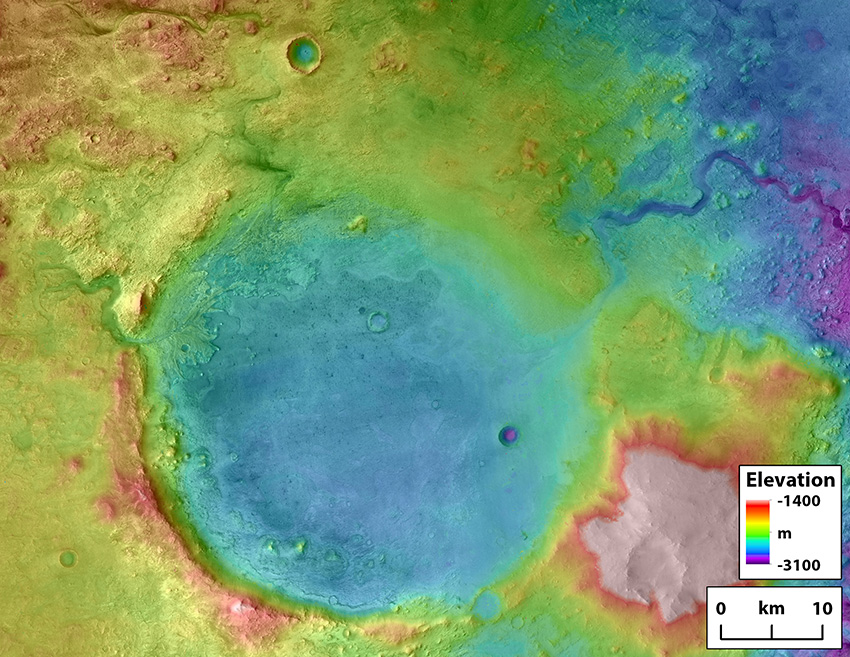A new study from UT researchers found that flooding from crater lakes on Mars could have rapidly shaped the its surface billions of years ago. The report, published in Geology on November 16, was written by UT researcher Tim Goudge and co-authored by geology professor David Mohrig and NASA scientist Caleb Fassett.
Goudge said these floods could have forged canyons over the span of years, months or even weeks.
“From this first paper, we don’t have any hard constraints on how long it took,” Goudge said. “But we’re doing computer models of this process and, in most of the cases we’ve run, the canyon is mostly carved within a matter of weeks.”
For comparison, the Grand Canyon has been shaped by the Colorado River over the course of the past five-to-six million years, according to the National Park Service. Goudge said this rapid surface change on Mars by flooding is largely due to the lack of plate tectonics on the planet.
“You don’t make mountain chains the same way (as Earth) through uplift,” Goudge said. “You make circular mountain chains by impact craters. So most of the surface topography variations we see are from impact craters, which make these closed basins that could flood.”
Goudge said the lack of plate tectonics also makes it easier to draw conclusions about ancient Mars from recent data. The data in his paper comes from three orbital satellites — two from NASA and one from the European Space Agency — that have been collecting data from Mars over the past 15 to 20 years
“These floods are very old, and so we’re able to preserve their (topographic) signature for a long time because the crust isn’t being recycled and overprinted with younger materials all the time, and so we have a larger record of the older surface on Mars compared to Earth,” Goudge said.
Floods no longer shape the surface of Mars because there is less liquid water on the planet. Geology graduate student Benjamin Cardenas said this is due to Mars losing its magnetosphere earlier in its history. NASA defines the magnetosphere as the area around a planet where its magnetic field dominates.
“(The magnetosphere) protects Earth from losing a whole bunch of its atmosphere to solar particles that come and remove the atmosphere, including water,” Cardenas said. “This also has the effect of thinning the atmosphere, and a thinner atmosphere is less favorable to liquid water and more favorable to solid ice.”
Cardenas said wind is responsible for most current changes to Mars’ surface, as evidenced by active dune fields on the planet.
“What you do see on Mars are active dune fields, so you have some sense that the wind blowing around there is able to move sand and erode old rocks — turn it into sand,” Cardenas said. “It’s a pretty stark contrast to the record you have of the ancient planet.”
The relative consistency on Mars means that Goudge can use contemporary data to advance his research.
“The next step is pushing forward this computer model to better understand the process and how long it took, how much water was involved and then see if there’s any predictions from the model that we can go back and test with our observational data from orbital spacecraft,” Goudge said.















